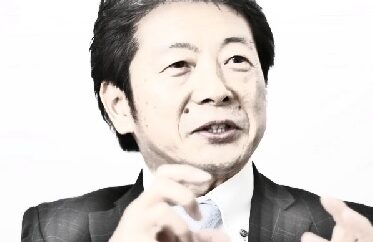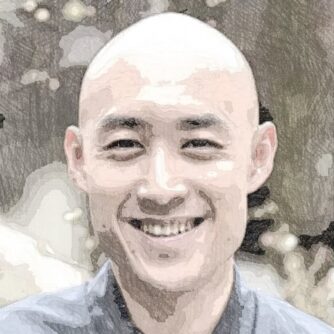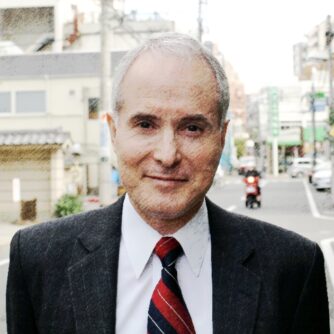Osamu or “Sam” Kunii is one of the most prominent leaders in the world of advancing global health. Access to healthcare is a basic human need, especially for the disadvantaged, especially in days with COVID. Sam grew up in Japan, always wanting to be doctor because he wanted to help people in need. This led him to refugee camps of Africa and other developing countries, and with this field experience, he currently leads a global effort to alleviate pain and suffering all over the world. He’s a saint, a pioneer, and an innovator. The kind person we all need.
https://www.theglobalfund.org/media/5236/corporate_osamukunii_biography_en.pdf
Osamu or “Sam” Kunii is one of the most prominent leaders in the world of advancing global health. Access to healthcare is a basic human need, especially for the disadvantaged, especially in days with COVID. Sam grew up in Japan, always wanting to be doctor because he wanted to help people in need. This led him to refugee camps of Africa and other developing countries, and with this field experience, he currently leads a global effort to alleviate pain and suffering all over the world. He’s a saint, a pioneer, and an innovator. The kind person we all need.
With headquarters in Geneva, The Global Fund is a “21st century partnership organization” that mobilizes resources that are necessary in the fight against the three major infectious diseases, HIV, Malaria and Tuberculous, which has been causing millions of deaths around the world. About 94% of financing for The Global Fund comes from donor countries.
The HIV pandemic in the 1980s and 90s was very serious with fatality rate of nearly 100% at that time. The current COVID pandemic is a very serious global crisis, but the infection fatality rate is less than 1%. Infectivity is high with COVID, but it was less than 5% of the population, even in the most infected countries. With HIV in the 1990s, close to 50% of the population were infected in Botswana, 30% in Zambia.
The cases of AIDS were first reported in 1981, but it was not until 1982 that the virus causing AID, HIV was identified. These days, viruses can be isolated relatively easily, and even its genetic evolution can be recognized easily too. Yet, when AIDS first broke out, response was slow and it took 5 to 6 years to develop the first medicine.
Therefore, HIV in the 1990s was spreading all over the world, especially in Africa. Medicine was very expensive back then, where annual dose for one year cost about $15,000. People in Africa could not afford such a price. In US and Europe, infected HIV patients could survive, but in Africa, people were dying.
By the turn of the millennium, leaders of advance nations the world felt that they had to do something. HIV caused resurgence of Tuberculous, and Malaria was killing many mothers and children in developing countries. Many of those dying were health workers and teachers. People working in agriculture and social workers were also dying. HIV devastated the society, the economy and even national security.
So, when the world leaders of the advanced countries convened for the G8 Summit in Okinawa-Kyushu in 2000, they felt that they must make concerted efforts to alleviate poverty, fight against those infections, and protect the economy, the society and human security around the world. This was the first time that the health issues were discussed at the G8 Summit, and the leaders agreed to create a new and innovative global partnership to save people in need.
Around the same time, the United Nation was also taking up an important role by establishing the MDGs (Millennium Development Goals) to be achieved by 2015, where 3 out 8 the global agenda were health related. (note: Goal 4 – to reduce child mortality, Goal 5 – to improve maternal health, Goal 6 – to combat HIV/AIDS, malaria, and other infectious diseases)
Malaria kills a child under 5, every two minutes, mostly in Africa. Children under 5 have not yet developed the immunity against a variety of infections, and malaria is quite fatal. It also kills lots of mothers during delivery of a baby due to blood loss under anemic condition.
In the Japan context, there are people living with HIV mainly specific populations. Even though Malaria existed in Okinawa and even on the mainland, it has now been eradicated and not in recent memory. While Tuberculous was once the deadliest in Japan, it is still a reality with tens of thousands Japanese killed yearly.
In 2014, Japan experienced a scare with Dengue Fever, when over 100 cases were reported, some from people just running around Yoyogi Park in central Tokyo got a bite from a mosquito. Global warming are expanding the globe the territory of mosquitos which transmit a variety of diseases like dengue, Zika, malaria.
In the United States, millions of people in almost all 50 states were infected by the West Nile Virus. It originated in Africa, but with global transport being interconnected, the virus is spreading across the world. As we have experienced, COVID spread from China to all over the world. This is the reality of the global society, so Japan needs to be prepared for a next pandemic.
The role of The Global Fund is not just about purchasing medicines and delivering them to people in need, but rather creating systems and mechanisms to empower the developing world themselves. They need to have the ownership, leadership and capacity to plan and implement their programs to fight against deadly infectious diseases.
This is of course very difficult initially, since planning and managing health programs is not an easy task. So, The Global Fund provides various technical assistance with various partners. However, the basic principle of The Global Fund is to mobilize resources based on countries’ ownership and leadership.
Many who are ill may need the medicine. But, the medicine needs to be delivered by health workers, but many countries do not have enough health workers. So, The Global Fund have got requested to help countries raise and develop healthy workers.
The medicine needs to be delivered in challenging settings like extremely hot environments or deep mountain areas, in which requires logistical operations.
Then, risk assurance of financial, supply and data management and programs quality are also critical. The Global Fund cooperates with independent agencies to monitor and mitigate such risks.
Since The Global Fund came into existence, estimated 38 million lives have been saved around the world by end of 2019 (The recent Result Report updated the number to 44 million by end of 2020).
Of course, other agencies, such as civil societies, NGOs, governmental and international organizations like WHO have supported these efforts and played important roles. But even though many of these organizations have their own good programs, it is often difficult for all the relevant partners to make effective joint programs for the common goal. They all want their own footprint for showing their contribution and impact, and raising resources, and in addition, need additional efforts for collaboration and partnership, which makes collaboration and partnership sometimes difficult.
But The Global Fund is not an implementing agency, but a facilitator or catalyst which provides a large amount of funding and creates mechanisms for many partners to work together and strengthen partnership toward the common goals and targets.Creating synergy in order to maximize impact at a country level and achieve the global goal, that is, ending epidemics, is the role and mission of The Global Fund.
As the head of strategy impact and investment, Sam’s division is quite diverse, and consists of 5 areas.
- Promoting partnerships and providing technical advice.
- Protecting and promoting human rights, gender equality and community engagement.
- Supporting countries to access to funding by providing information, facilitating independent technical reviews of funding requests and grant approval and making.
- Supporting operationalization of sustainability, transition and co-financing policy, and promote domestic resource mobilization and blended financing.
- Analyzing strategic information, measuring and reporting results and impact.
A very complex task, indeed.
So, how did Sam end up at The Global Fund? Well, he always wanted to be a doctor as child, seeing his mother working a nurse and his father working as a laboratory technician. While he was growing up, he heard some sad stories about patients who were dying, so he wanted to help by becoming a doctor.
In high school, he read a biography about Albert Schweitzer (who earned the 1952 Nobel Peace Prize for his hospital work in West Africa), when Africa was regarded as the “dark continent.” Sam was inspired to devote himself to the developing world like Africa.
He entered Jichi Medical University since they provided him the financing for the education, including living costs. However, upon graduation, Sam found himself not in Africa, but in a remote mountainous village near Nikko in Tochigi Prefecture.
Yet his passion for Africa had not waned. As a medical student in 1984, he volunteered at a refugee camp in Somalia. He wanted to see the reality of healthcare in those difficult regions. He also visited in other challenging environments, such as slums in the Philippines and Thailand, and a refugee camp in Cambodia.
The reality he saw at these sites was that there were more people in need than the resources available. Sam saw that even though patients were given medical treatment, because of lack of clean water or nutrition, many of them pass away from other diseases. What they needed was not just medical care, but basic human needs.
Sam felt that he wanted to do more than just medicine, which eventually led his path to public health. He could have chosen a more comfortable life as a doctor in Japan, but Sam chose the more difficult road. Why? Because he “really loved to do that.” He wanted to help people in need, through which he could find himself happy.
Of course there are people in Japan that are in need. But, Sam felt there were more needs in Africa. So, while working as a young doctor in remote mountain village in Japan, he asked the mayor for a 2 week leave to go to Somalia. Sam would ask his friend to take care of the village while he was gone.
The mayor asked, “why are you going to Somalia?” Sam replied, “because there are lots of people dying there, and the two weeks will help a lot.” The mayor gave Sam money to buy medicine for Somalia.
While a doctor in Japan, Sam managed some of the heath projects of AMDA (Association of Medical Doctors in Asia), an NGO devoted to medical emergency relief, which he helped found with a few other doctors and played the vice representative of.
In April 2021, I presented a recommendation paper to Prime Minister Suga by the “Business Leader in Support of Global Health” where we urged the Japanese government to double the allocation to global health in the ODA budget from the current 5% to 10% over the next 5 years. This would put Japan at the same level as the average of the other advanced nations.
In presenting the paper, I told the prime minister that just like Carbon Neutral Society by 2050, global health was also a critical growth strategy for Japan. However, when there are many domestic problems, why should taxpayers’ money be spent for people we don’t know, very far away. A fair argument.
Sam responded with the following three points. The first point was that Japan’s past experience of rapid reduction of mortality and improving longevity, and technology products in diagnostics and others can be used to advance health of people around world. This would have a very direct economic impact for Japan as well.
The second point is that health is not just a benefit, but rather a basic human right. And as one of the leading developed countries, Japan has the responsibility to advance this human right in the world.
The third point is that COVID showed all of us what pandemic can do to a society. Japan needs to be prepared and respond quickly and effectively to such a threat. It just makes plain sense to be prepared.
But, how do we get government and the people to prepare for a long-tail risk, like a global pandemic. Sam replies that the important principle in crisis management is to be prepared for the worst case scenario, as well as understanding the likelihood and its impact.
He understands that people don’t want to spend huge amount of money for preparedness. And Japan was lucky that mortality rate by COVID was less than those in western countries. But lack of preparedness really matters, and Japan should realize this.
This podcast is titled “Made With Japan.” There must be a role for Japan in advancing global health. But, is Japan doing enough?
Sam replied that “I really feel Japan can do more and better.”
In the past, Japan tackled Tuberculous very well. Also, the reduction curve for mortality rate of children under 5 for the Japanese society is a quite remarkable achievement. “Japan has good tactics, especially in community-based approach,” notes Sam.
In Japan’s development of the healthcare infrastructure, community, workplace and school leaders were asked to support disease control with regular health check-up and examinations. Public health nurses and community health volunteers visited residents of areas, and the municipal and prefectural agencies were very well connected with the communities. Sam believes that this kind of experience of basic community healthcare in Japan can be adopted in Africa.
Japan is not so good at “creating 0 to 1,” but Sam believes is better at “creating 1 to 10” or “10 to 100.” Once the health needs are understood, Japan has the expertise and experience to make smaller devices at cheaper prices. For example, Fuji Film contributed to advances in global health by manufacturing mobile Xray machines and using AI for diagnosing and further treating Tuberculous.
Educating and training medical doctors are expensive and time consuming. However, utilizing AI and other technology, medical services can be provided at cheaper and at more accurate levels for many locations around the world. An “AI doctor” in Japan would face difficulty practicing domestically from vested interest oppositions, but Africa is likely to be more receptable because they have a shortage of doctors and medical professionals. Sam is hopeful that Japanese technology and wisdom could make advances in helping Africa.
However, for Japan to get more involved in global health, we need more people like Sam. He finds lots of young people interested in working in so called developing world, even though, in general, young people tend to stay and work domestically in Japan and are not too ambitious at a global level. Therefore, he is concerned, but at the same time is hopeful.
He wonders whether Japan needs to offer some incentives to increase kind of people that want to work in Africa and other developing countries. Africa has lots of challenges, but at the same time offers many opportunities with their young population. Big Japanese companies should recognize this market opportunity, and at same time helping people with needs. The world is full of opportunities, and Japan could learn and gain a lot from it. Sam wants to continue to work to help young people to make most of such opportunities, contribute to the world, and return their learning and experience to advance Japanese society as well.



